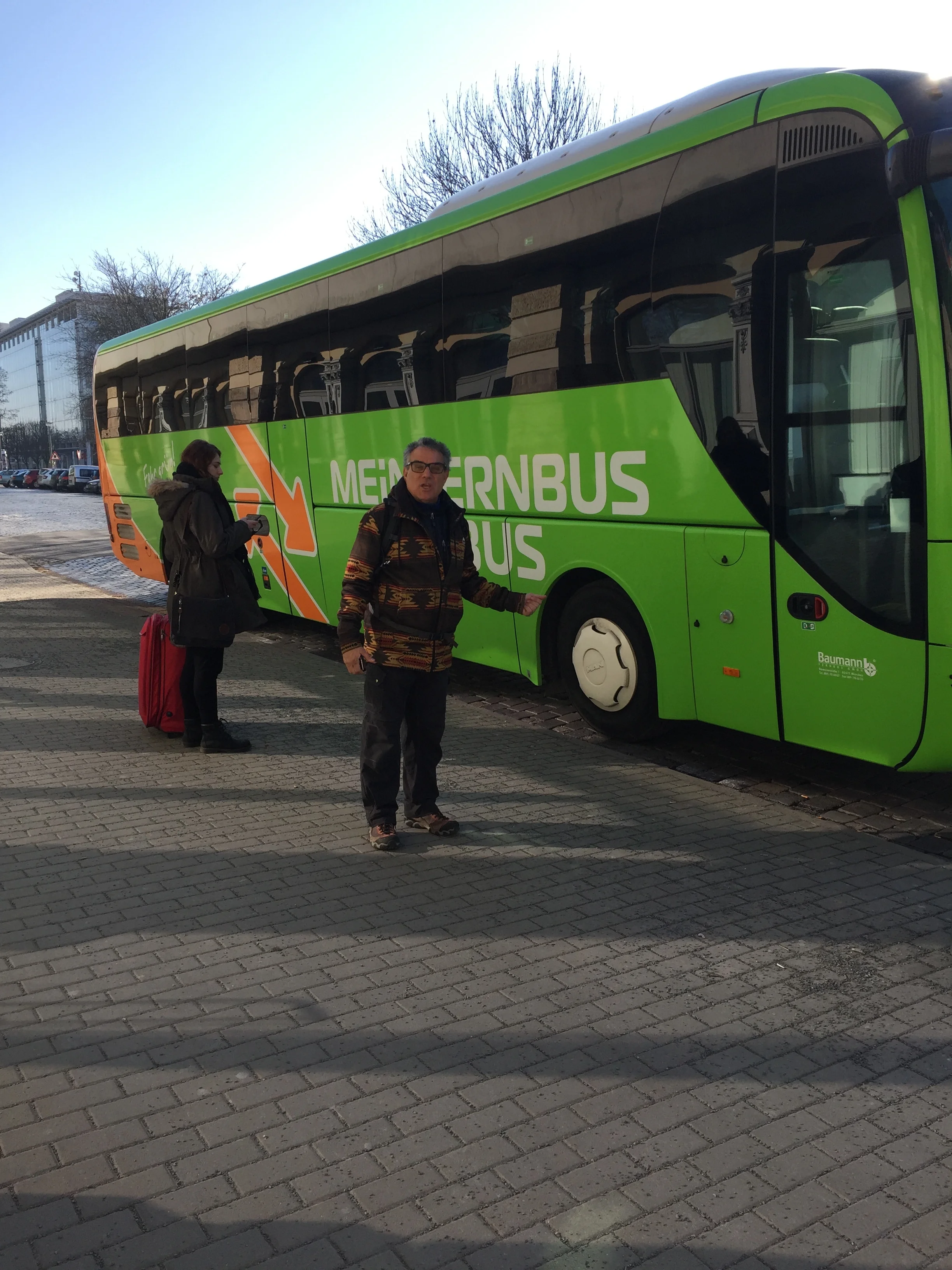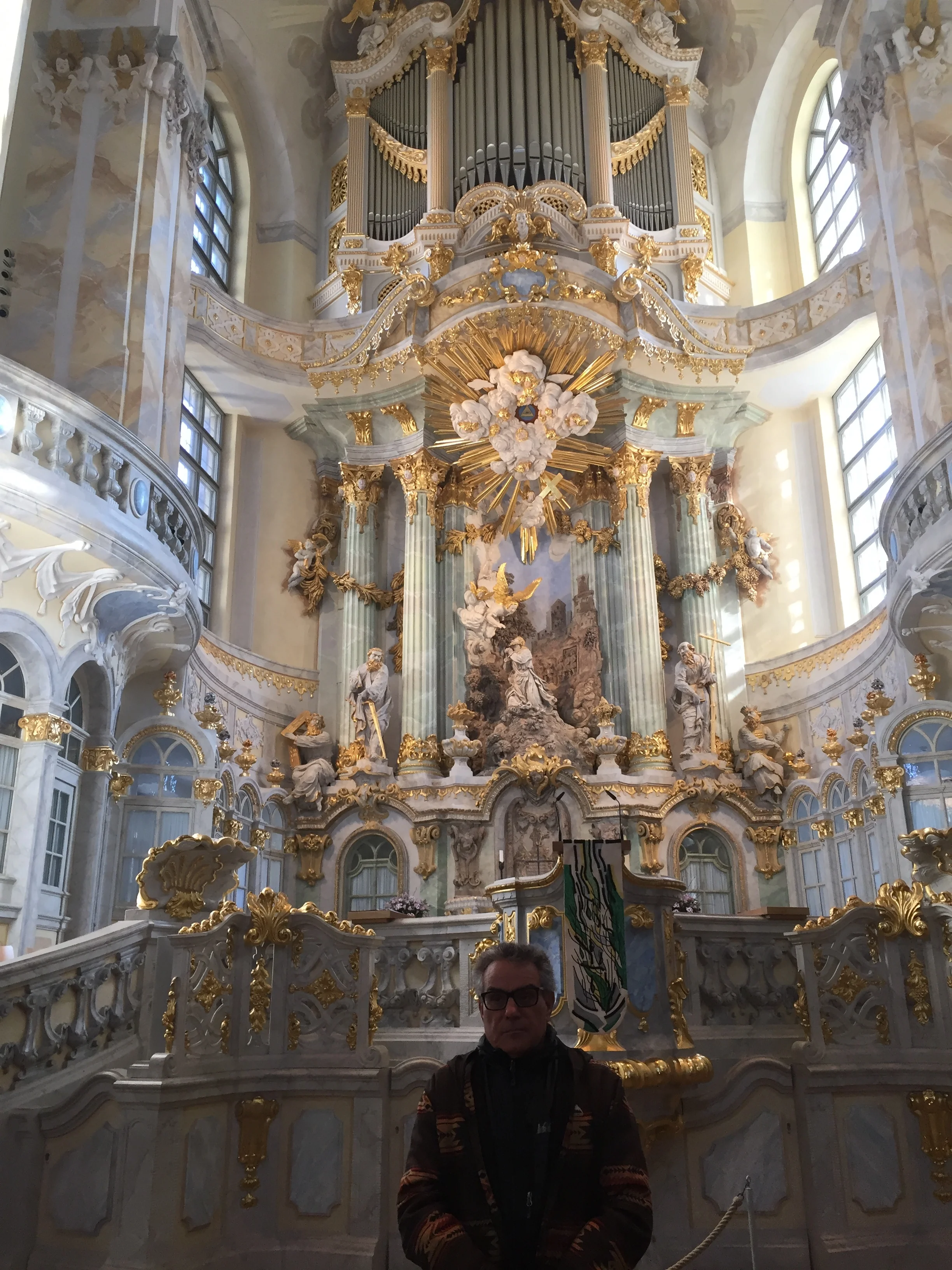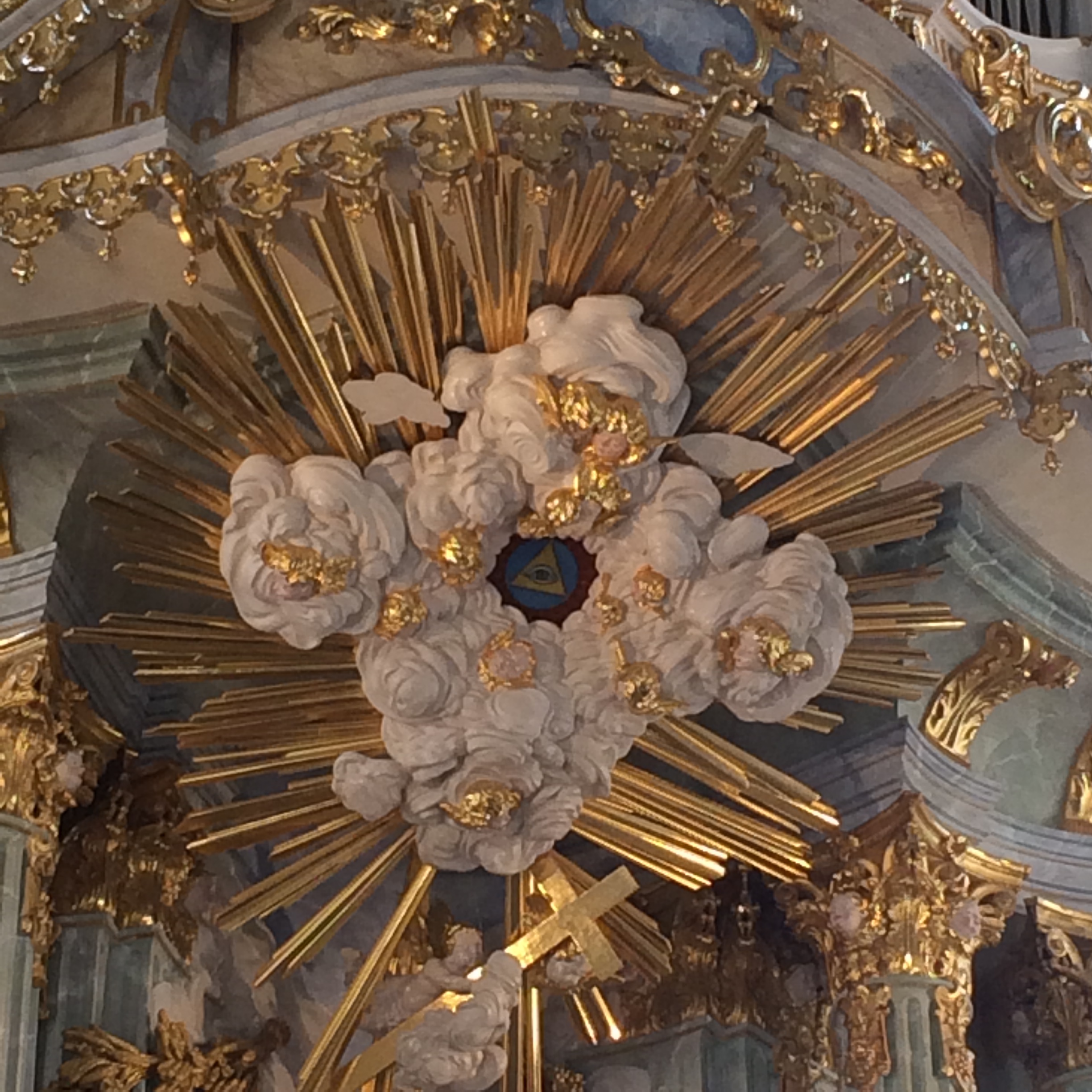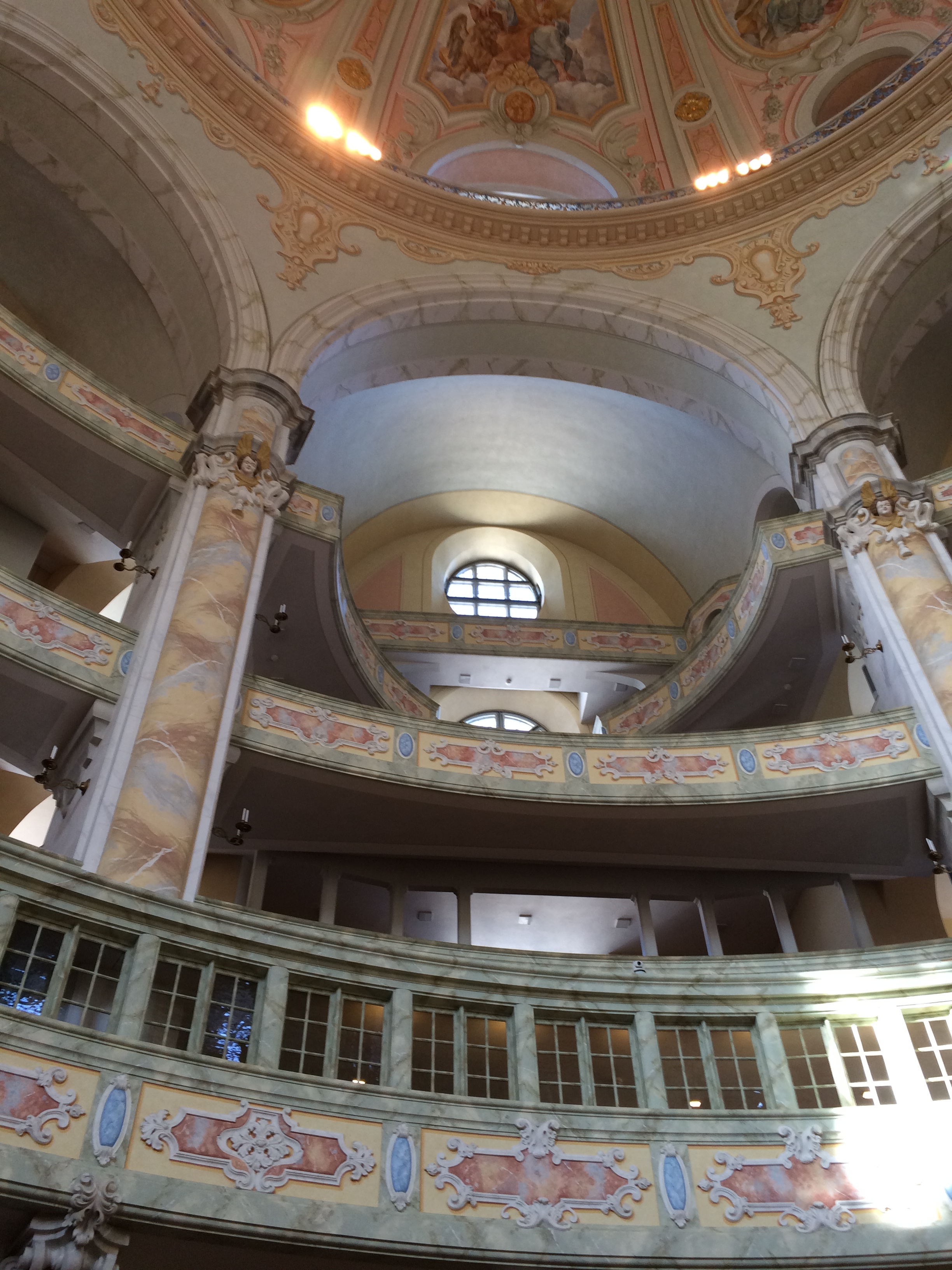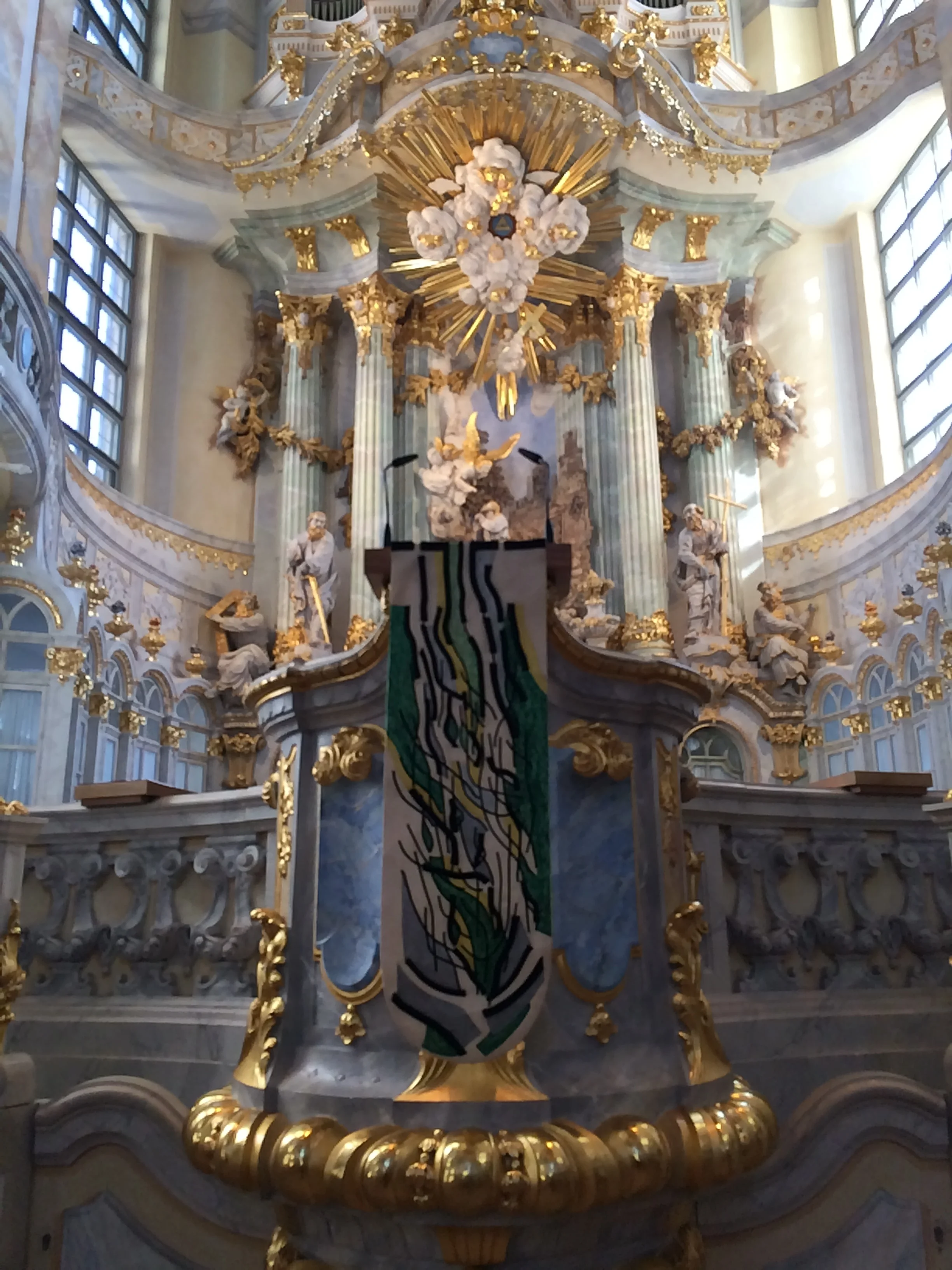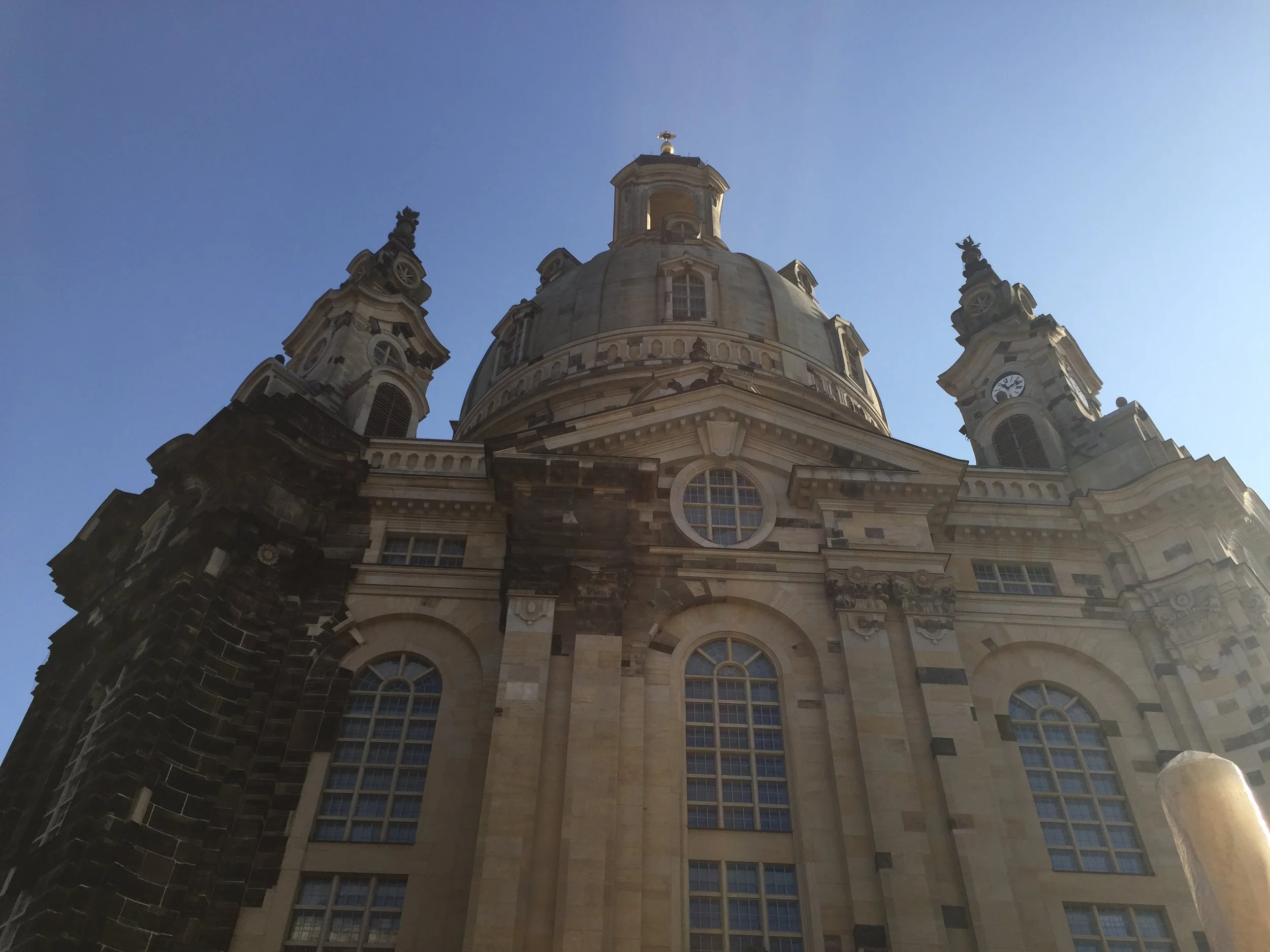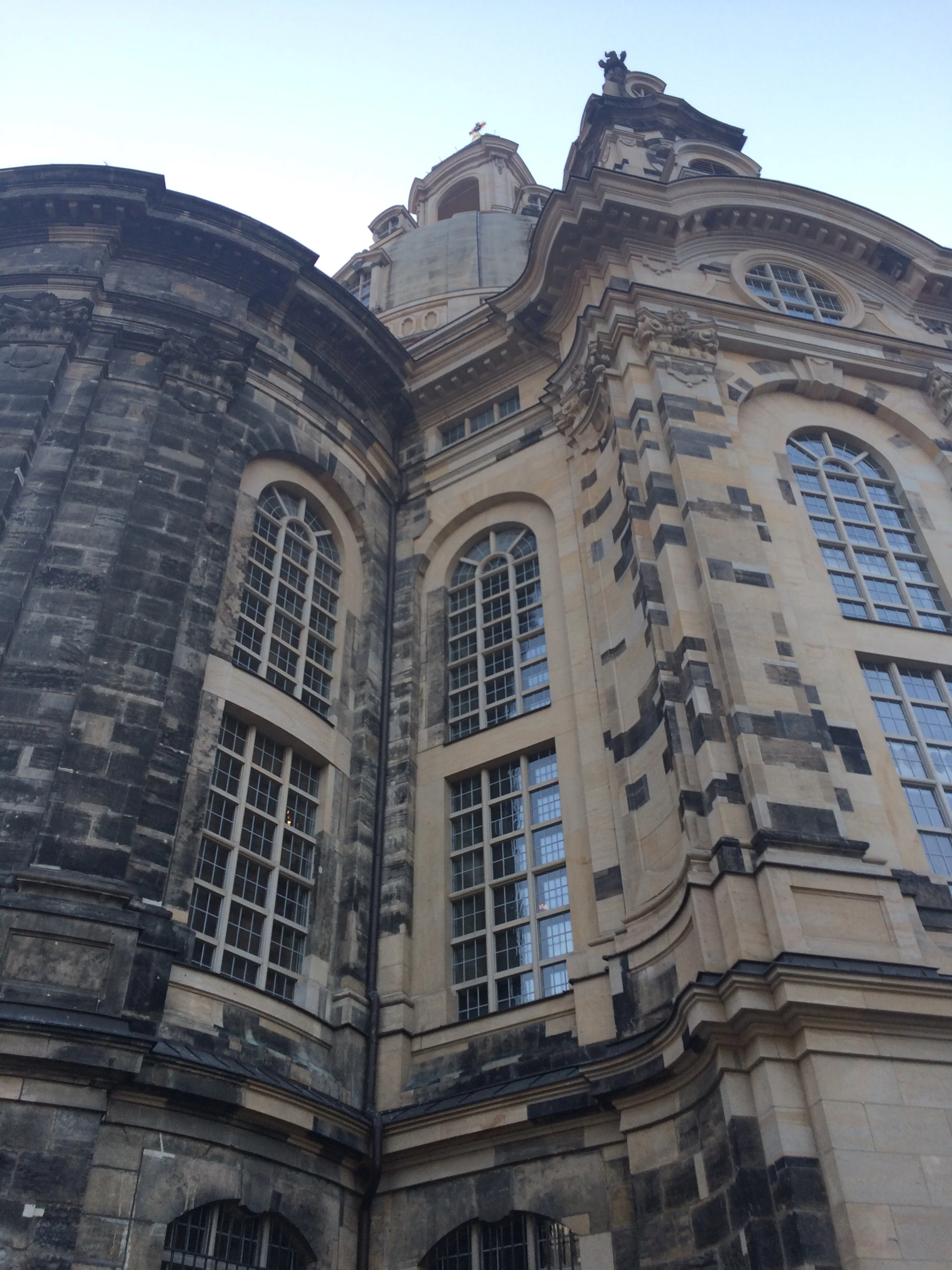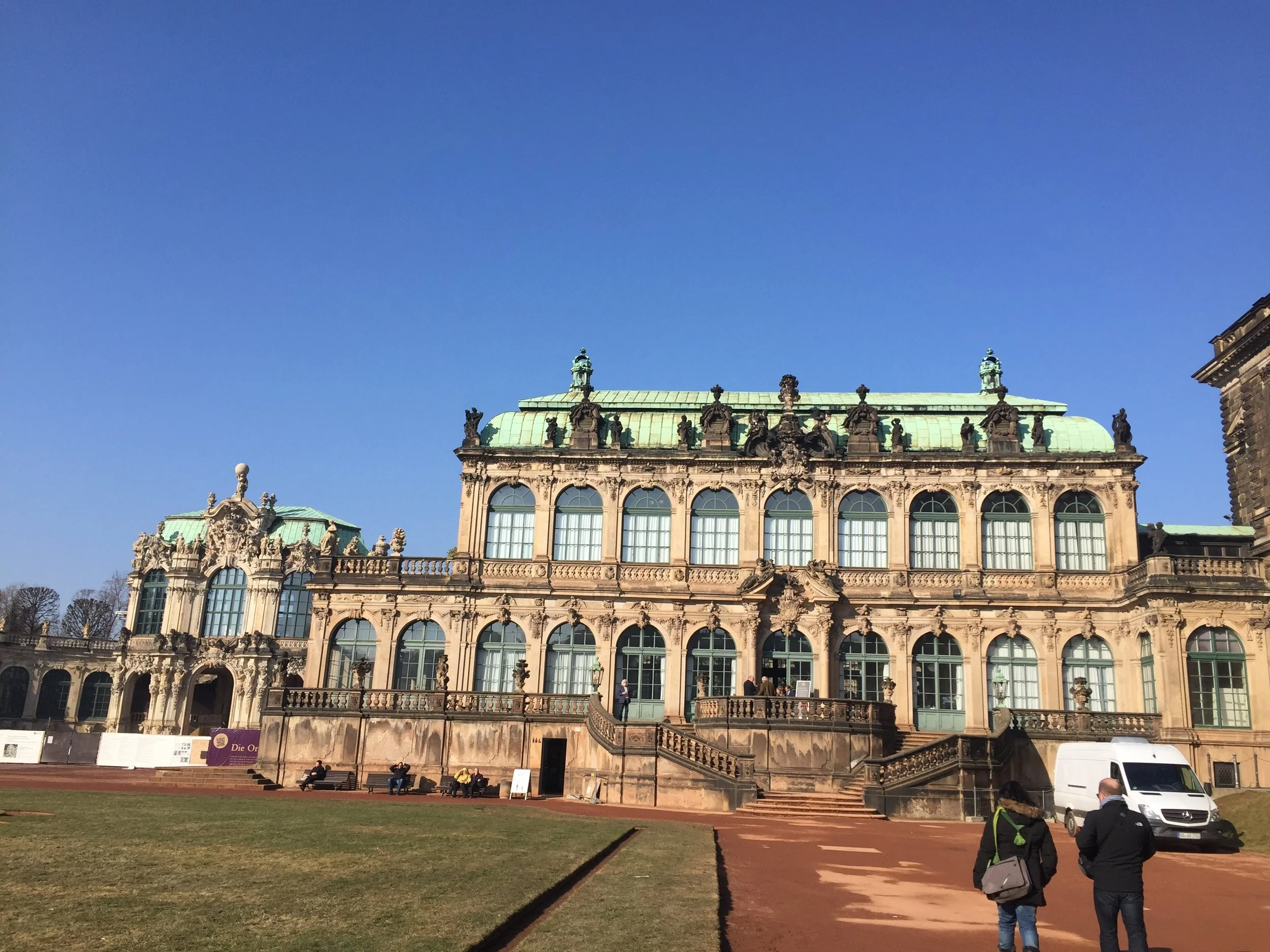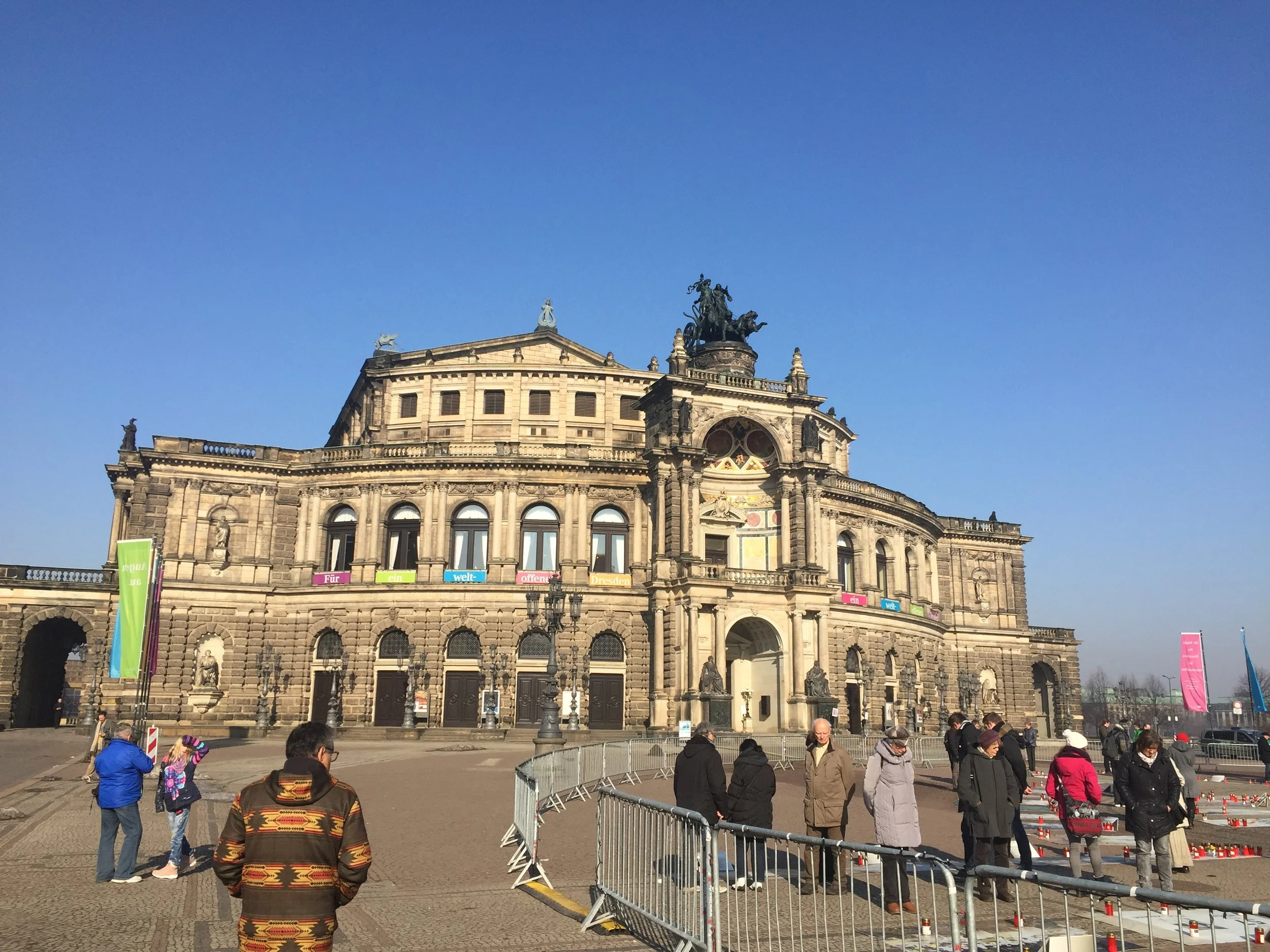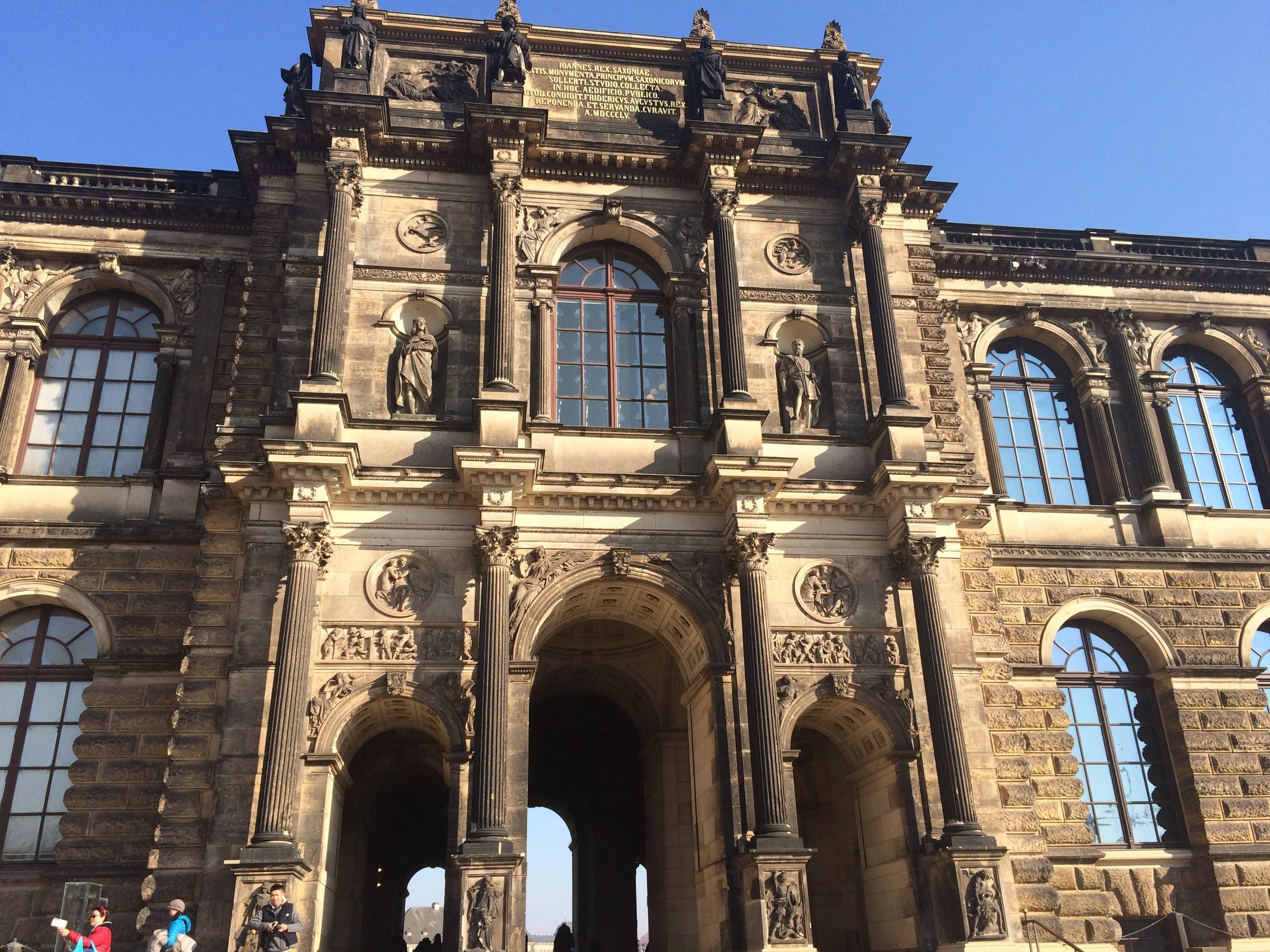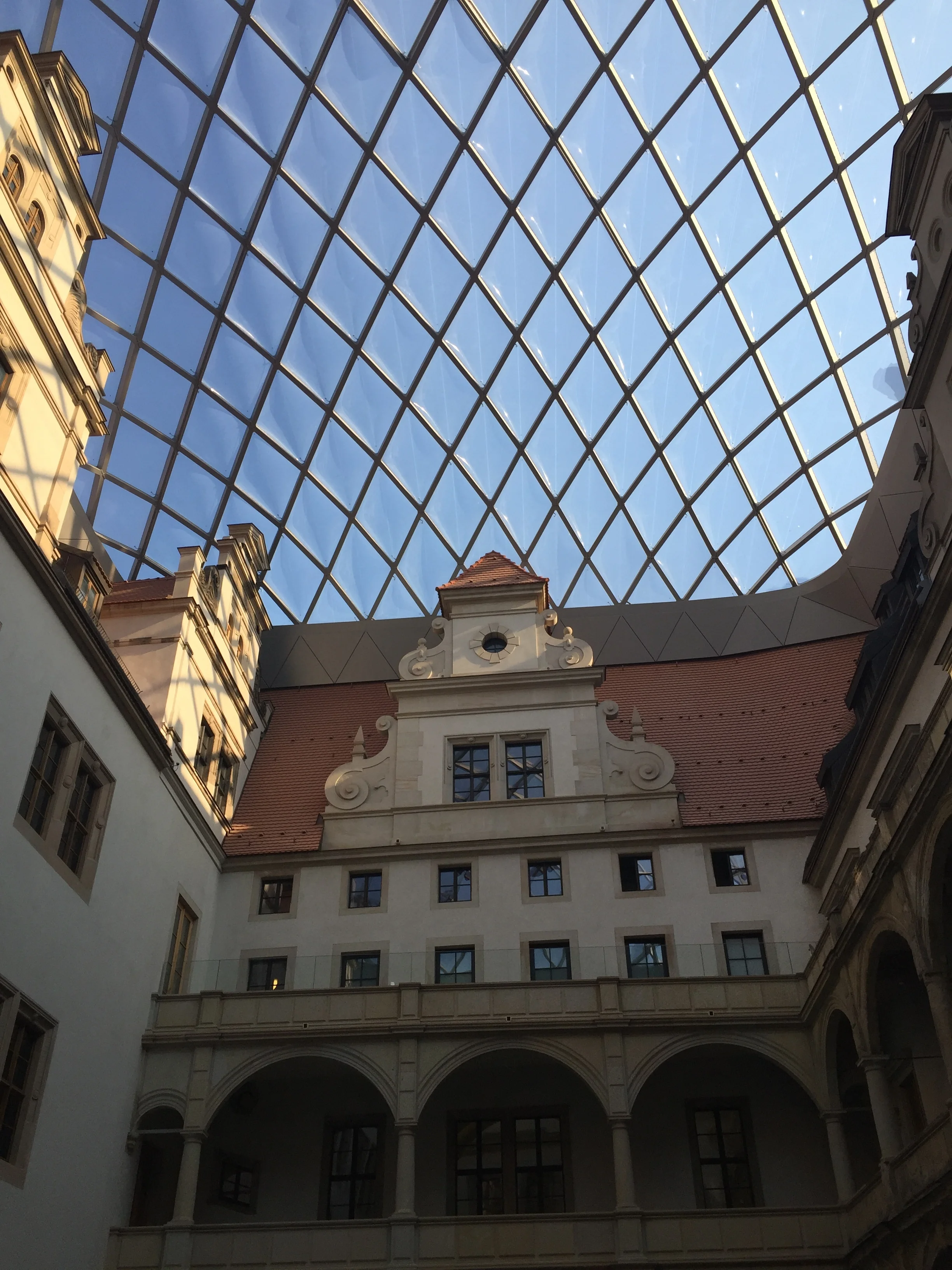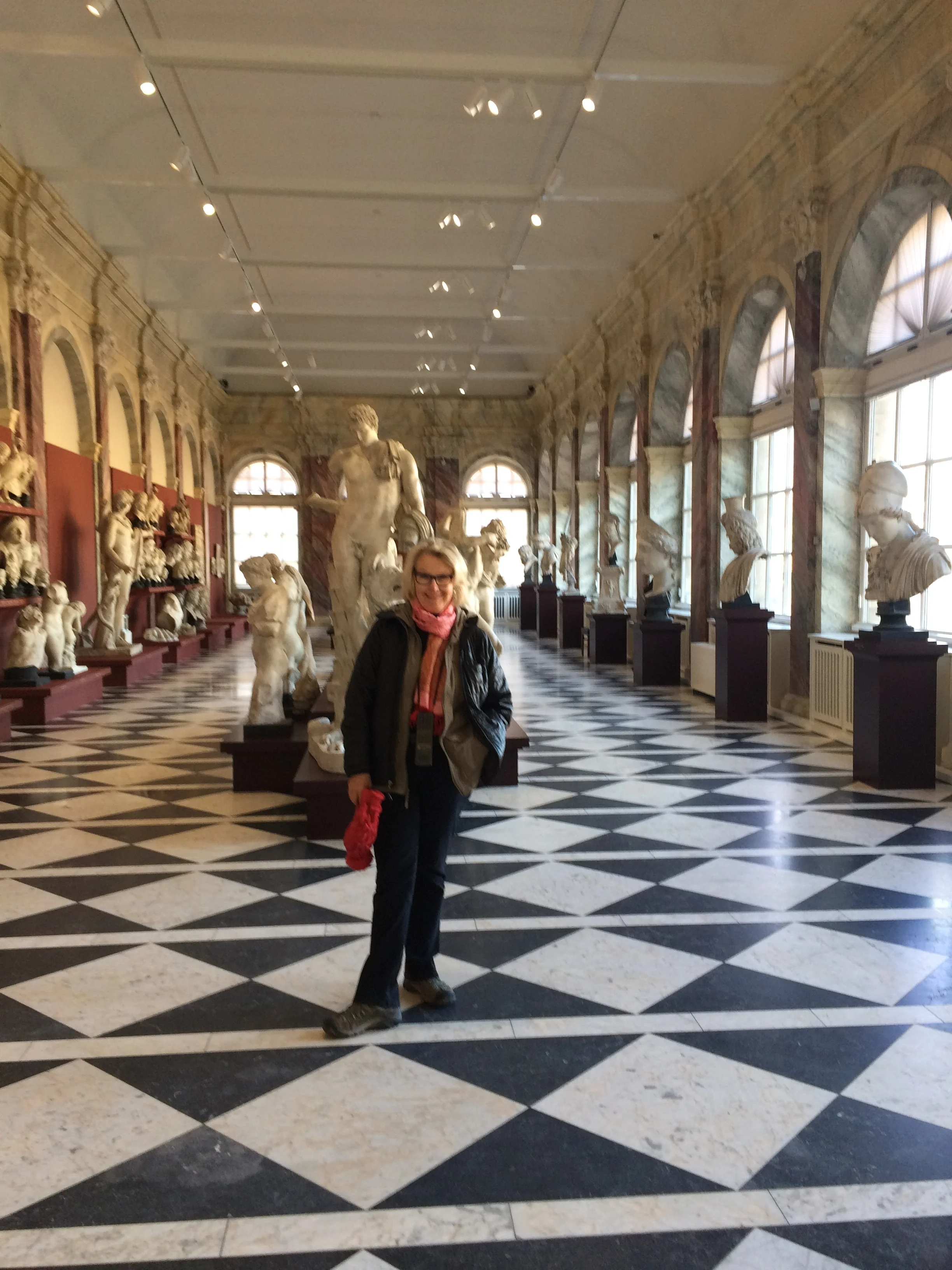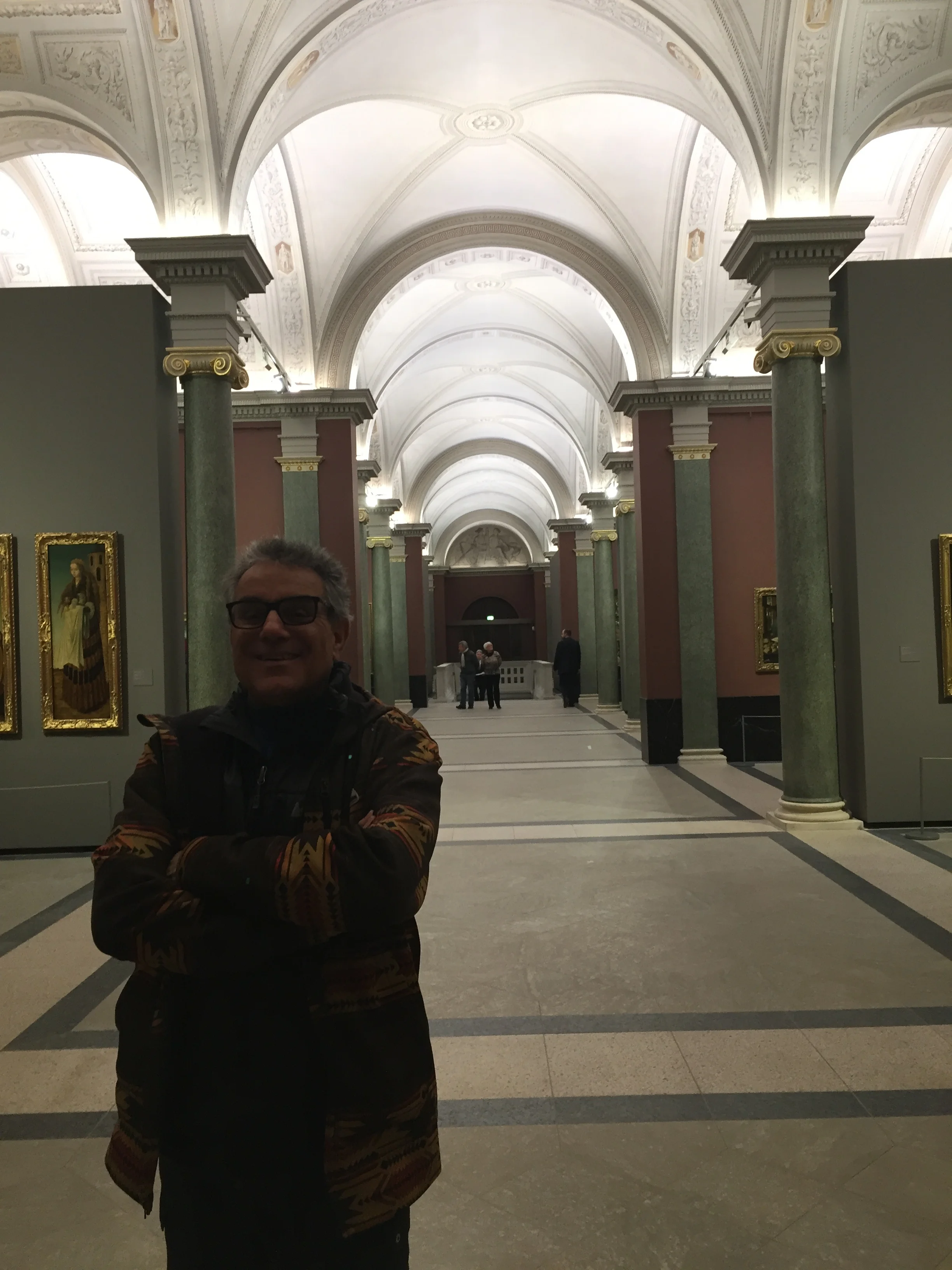Frank boarding the bus
We decided to take the FlixBus from Berlin to Dresden. It cost only $15 for 2 tickets rather than the $50 for the train. We left Berlin in the Brandenburg Region and now have moved south to the Saxony Region, known for its castles, cobbled marketplaces and churches. In a few days we will move to Bavaria and then finish in the Black Forest of the Baden-Wurttemberg Region.
Dresden was devastated by a controversial bombing in WWII. Over 90 percent of the historic area was destroyed. The important landmarks have been rebuilt, but only relatively recently as Dresden was in East Germany and controlled by the Soviets who had neither the will nor money to do so. The motive for bombing so late in the war has raised issues about military strategy verses revenge and punishment. After arriving late in the day, we walked around the central city square, which is visible from our hotel window. People where all around, strolling on this Sunday afternoon. We organized our thoughts about the sites we would see.
Dresden Center Square where our hotel is
On first full day in Dresden is February 13th. This is the 72nd anniversary of the bombing that continued 3 days by UK and US forces. There is a special ceremony scheduled for the evening at the town central. After breakfast we decide to visit a few important sites, then an afternoon walking tour.
We circled the city center and received historical information from the local information center.
The city of Dresden first gained notoriety by charging merchants who needed to use its Bridge across the Elbe River as part of the trading routes through Europe and was the home of Saxony’s royal family. Later, August III, wanted to expand the fame of himself and Dresden and built wonderful palaces and churches, and the Opera House. He also became King of Poland which required him to become Catholic. But Saxony was the home of Martin Luther, the Protestant reformer, so the King had to keep his subjects happy by building the protestant Cathedral known as Frauenkirche.
Frank outside the Frauenkirche.
So for our first stop, we visited this cathedral and we were really amazed with the beauty. The entire church was renovated in the late 1990’s. The reconstruction cost $180 Million, most of the money coming from the UK and USA. The exterior still contains blemishes from the fire that followed the bombing as do most buildings in this town. It is impressive. We saw a short movie about the history and reconstruction. The host verified, “English”, we said yes, but added “ American”. The old guy replied, “Love, Love”. We felt good about that. Guess he might feel different about Brits.
The black stones are original the light are new
Our walking tour was small, just us and a fellow American from California who was on an extended travel schedule. Nice guy who was moving around the planet on a reverse course from us. We spent the afternoon visiting all the major sites. First the former Palace residence of August III aka “August the Strong”, who ruled this area, Saxony, for 60 years. The Palace, once it was rebuilt, has now been turned into a wonderful 3 story Museum of royal jewels and art, and statuary, and weapons, and other royal gifts accumulated during his reign. The court yard has been covered by a clear geodesic dome designed by an American architect. There is still work to be done in the second courtyard. It is really a very interesting display that shows the wealth of the King. See the below pics as great examples of the Baroque style buildings lining the historical city center
Our pub lunch of sausage, pickles, pretzels and beer
After our tour we had a traditional german lunch and beers with our fellow american tour mate. We discussed our travels and exchanged suggestions. It was a relaxing stop before more sight seeing. One of the great benefits of our slow travel style is meeting and sharing time with other travelers.
Since yesterday a large sand scape has been built in the square which will be used for a lighted candle memorial. The residents are set to stand hand in hand and encircle the city. After a day of sight seeing, it is now 6.00 P.M., and the bells of the many churches start to chime as the memorial begins.
On our second and last day in Dresden. We are taking the Bus at 12:30 to Munich. Just enough time to get a couple more hours of sight seeing in. There is spectacular museum that we will run through before we take off, the Zwinger. The Zwinger, is a marvelous palace initially built in a “U” shape by August III, with the open end facing the river Elbe. This was August’s magic fair ground and play area where royal outdoor activities took place and gardens viewed. This is a marvelous area with expansive lawn and fountains surrounded by the Baroque architecture of the palace. Interestingly, the term “Zwinger” is derived from the German word describing the “dead zone” between castle walls. Later a fourth building was erected that closed the U and that is where the Art museum is located. This was our target, where the works of great Old Masters were displayed. Unfortunately, the Porcelain collection from China was not open, though visible through the courtyard windows. We where able to see works by John Paul Ruebens, Bernardo Belleto aka Canaletto, the landscape painter, and Raffael, and other masters from Europe, derived from the 15th to 18th century and usually depicting some religious theme or landscapes. We had to cut the visit short in order to get to our Flixbus for the cheap 7 hour drive to Munich. We thought about taking a train, but the cost was substantially more and the time frame not substantially better, along with a change of trains, no thanks.
The museum was a no picture zone but we managed these two
Times Up! We are off to Munich in the Bavarian province of Germany.

